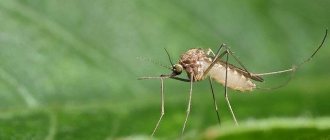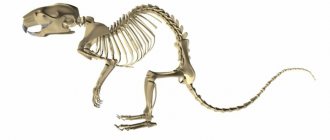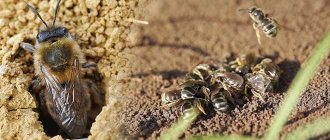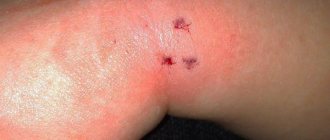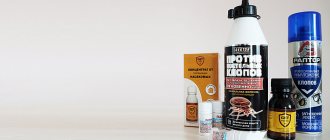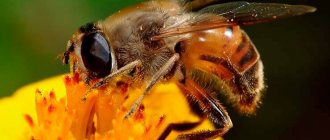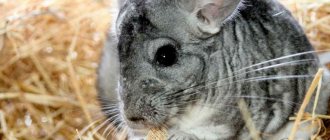Bacteria are present everywhere: in water, air, soil, in mountainous areas and even hot geysers. They can choose plants, animals and even humans as their habitat. Bacteria have a very small size and various shapes, due to which they can penetrate even the most inaccessible places and are resistant to temperatures and other unfavorable living conditions. According to the method of nutrition, they are autotrophic and heterotrophic. The latter, in turn, are divided into saporotrophs (saprophytes) and symbionts. Let's take a closer look at saprophyte bacteria.
Division of living beings according to type of nutrition
Every living organism requires the supply of certain substances or energy from outside to ensure its existence. The process of consuming these resources is called nutrition.
According to the method of nutrition, all living organisms are divided into two types:
Autotrophs are organisms that are capable of independently producing the organic substances they need from inorganic ones. These include most plants that obtain their food from carbon dioxide and water using solar energy.
Heterotrophs are creatures that need ready-made organic substances. This is a huge group of living organisms, within which there are many more classifications. Heterotrophs are divided into biotrophs and saprotrophs. The former feed on living organisms: animals or plants. These also include parasites that have adapted to a life where their host is both food and home for them.
Saprotrophs, on the other hand, obtain food from dead creatures or their secretions (including excrement). This group includes bacteria, plants, fungi (saprophytes) and even animals (saprophages). They, in turn, are also divided into different subgroups: detritivores (feeding on detritus), necrophages (consuming animal corpses), coprophages (feeding on feces) and others.
This is interesting: What is a site plan and how does it differ from a map?
Symbiont mushrooms
Symbiosis is the cohabitation of different organisms in which both benefit. Symbiont fungi participate in the formation of two symbioses:
- lichens formed as a result of interaction with algae and bacteria;
- mycorrhiza - with the root system of plants.
Nutritional Features
Mushrooms, entwining the small roots of plant organisms, feed on the organic substances that make up their composition. Such actions do not harm plants, but promote the absorption of nutrients (nitrogen, phosphorus, microelements) and water from the soil.
Names and descriptions of popular symbiont mushrooms
Typically, cap mushrooms are classified as a mixed type of nutrition, which can receive organic substances from both plant roots and humus.
- Boletus. Interacts with aspens, oaks, willows and poplars. The brown hemisphere-shaped cap has a reddish or orange tint. It is impossible to separate the layer of skin without pulp. The height of the gray leg is up to 18 cm. The fruit body is fleshy and dense. Young individuals are elastic, while old ones become loose. At the break, the white flesh turns blue over time and then turns black. Does not have a pronounced aroma.
- Boletus. Grows near birch roots. Over the course of its life, the mushroom cap changes from a spherical shape to a flat, pillow-like shape. At high humidity it becomes sticky to the touch. The white pulp with a dense structure oxidizes at the cut site. In older individuals it becomes watery and loose. Cylindrical leg covered with dark gray scales.
- Oiler and saffron milk cap. They live under coniferous trees. Butterflies are characterized by a slimy skin that appears to be coated with oil. Hemisphere-shaped hats reaching 16 cm in diameter are painted in a spectrum of colors from brown-chocolate to yellow-brown. As they grow older, the shape straightens out, becoming flat. The color of the stem is usually lighter. The pulp is juicy. The saffron milk cap is characterized by a round cap with concentric circles and a depressed center. The orange pulp oxidizes when it comes into contact with air, acquiring a greenish tint.
If you destroy the host tree, the mushrooms growing underneath will also disappear.
What are saprophytic microorganisms
Heterotrophs can exist solely as a result of feeding on ready-made substances, while autotrophs are able to feed themselves.
During the study, heterotrophs were again divided into symbionts, saprophytes and parasitic bacteria.
Therefore, saprophytes are harmless creatures that eat dead objects. These may include any substrate containing rot.
Physiological processes of saprotrophic bacteria
Among these microorganisms are:
As an effective medicine against parasites, doctors advise taking the drug “Gelminton”. The composition of the product is based only on natural ingredients of natural origin, they were grown in places with 100% clean ecology, and have a proven effect that allows you to quickly deal with any type of worms.
- anaerobes (Escherichia coli, it can live in an oxygen-containing environment, but all life processes take place without the participation of oxygen);
- aerobes (putrefactive bacteria that use oxygen in their life processes);
- spore-forming bacteria (genus Clostridia);
- non-spore-forming microorganisms (Escherichia coli and Pseudomonas aeruginosa).
Almost the entire variety of saprophytes, as a result of their vital activity, produces various cadaveric poisons, hydrogen sulfide, and cyclic aromatic compounds (for example, indole). The most dangerous to humans are hydrogen sulfide, thiol and dimethyl sulfoxide, which can lead to severe poisoning and even death.
Saprotrophs take their part in the process of decay.
Living world
Saprophytes occupy an important place in the cycle of substances in nature, breaking down complex organic substances into simple ones, cleaning the world from the rotting remains of animals. Who belongs to this group of hard workers? Saprophytes are quite widespread in the world. Examples of them can be found in every kingdom. They are found in abundance among bacteria (single-celled protozoa), among fungi (from mold to mushrooms consumed by humans), among plants (from algae to flowering plants such as orchids).
Among animals there are also saprophytes (we will also name examples of them). However, then it would be more correct to call them saprotrophs or saprophages. In the animal world, saprophytes include some insects (dung beetles, leather beetles, fly larvae and other insects), earthworms, and many crustaceans (crayfish, benthic amphipods). Among the large representatives of the animal world are birds (crows, vultures, vultures), some fish and various animals (hyenas, bears and everyone who has to eat carrion).
Structure and methods of nutrition
Fungi belong to the species saprophytes or saprotrophs, which form many spores in the process of life. They scatter to surrounding plants or animal remains, facilitating the reproduction and spread of the mycelium. Examples of vegetation that organisms like to settle on:
- cones;
- branches;
- hemp;
- stems of annual grasses;
- needles and foliage;
- feathers and horns.
Different saprophytes or, as they are also called, decomposers, are characterized by different types of substrate on which they settle and feed. So, for the summer honey mushroom, the best food is the remains of deciduous trees. False honey mushrooms feed only on needles. But the white dung beetle miraculously exists in places highly saturated with nitrogen.
Saprophytic bacteria
Bacteria are such small organisms that they can only be examined with the most powerful microscopes, magnifying hundreds of times. And although in ordinary life a person is not given the opportunity to see them, he has to deal with the results of their activities every day. Thus, thanks to them, the existence of fermented milk products and wine is possible. And while some bacteria cause infectious diseases, others are of great benefit to humans.
Among them are, for example, some E. coli and bifidobacteria that live in the human digestive tract. They help the body absorb nutrients and fight pathogenic flora.
Example of saprophytic organisms
mushrooms
The types of saprophytic fungi vary depending on the layer in which they develop. Some examples of these samples:
-Dung: species of the genera Dungweed, Stropharia, Anellaria, Cheilymenia, and Pilobolus.
-Pastures: Agaricus campestris, Agaricus squamulifer, Hygrocybe psittacina, Marasmius oreades and Amanita vitadidia.
-wood: Fomitopsis pinicola, Ganoderma pfeifferi, Oudemansiella mucida, Lentinus lepideus, turkey tail species, oyster mushrooms (Pleurotus), Bolvitius vitellinus and Polyporus arcularius.
-Lake basins: Bloody Mycenae, Inocybian lace, Hygrocytic coccineocrenate, Cantharellus tubaeformis and Ricknella fibula.
-Pirófiatas: Pyronema omphalodes, Pholiota carbonaria, Geopetalum carbonarius, Geopyxis carbonaria and Morcella conica.
Mold (oomycetes)
Mold is considered a member of the pseudofungal group. Among those classified as saprophytes, there are some species of the orders Saprolegniaceae and Pythium.
bacteria
E. coli This is associated with diseases transmitted by contaminated food. Zygomonas This is a bacterium that ferments glucose, producing alcohol. Acetobacter oxidizes organic compounds and converts them into another substance, lactic acid.
Clostridium aceto-butylicum converts carbohydrates into butyl alcohol. Lactobacillus converts sugar into lactic acid. Canned food damaged by Clostridium thermosaccharolyticium.
This is interesting: The role of homologous chromosomes in cell division through mitosis and meiosis
Saprophytic plants
Although plants are classified as autotrophs (that is, they create their own nutrition using sunlight), this does not prevent many of them from being saprophytes to some extent. To survive, they need additional organic matter from the soil.
Among the plants, saprophytes include pineapples, orchids, begonias and some cactiaceae, as well as many mosses, ferns and algae.
This is interesting: What causes a volcanic eruption?
What exactly do saprophyte bacteria feed on?
The bulk of microorganisms existing in nature belong specifically to saprophytes. Like people, they have their own tastes and demands for the food they eat, that is, organic substances must contain more/less certain compounds that help them develop and lead active life activities.
For example, some organisms of this class need to consume the decomposing bodies of animals or plants, containing putrefactive compounds, for full life activity, while for others it is enough to penetrate milk, as a result of which its fermentation is observed.
Consequently, for the life of saprophytes the following may be required:
To study the activity of saprophyte bacteria in more detail, no special substances were used. They were launched into whey, meat, yeast and plant media. Each type of microorganism actively absorbed this substance, but if the substrate was not suitable, then the feeding process slowed down.
habitat
Saprophytes prefer a moist environment with low temperatures. These organisms require oxygen to perform their vital functions. Development also requires an environment with a neutral pH or a small amount of acid.
Fungi can live on the vast majority of solid substrates because their hyphae allow them to penetrate different layers. Bacteria can also be found in a variety of media, preferring liquid or semi-liquid media.
One of the natural habitats of bacteria is the human body. There are several types of saprophytic bacteria in the intestines. They can also be found in plants, standing water, dead animals, manure and decayed wood.
Mold is a major factor in the decomposition of freshwater and saltwater.
-Environment of saprophytic fungus
tree
These organisms are the main wood decomposers because it is an excellent source of cellulose. His preference for wood is an aspect of great environmental significance.
This predilection for wood is also a nuisance as they attack wooden structures such as house foundations, furniture, etc. This can have negative consequences for the timber industry.
leaves
Fallen leaves are a source of cellulose, so they are a great way for fungi to grow. They attack all types of leaves, although in some species, such as Gymnopus perforans, they live in certain types of leaves, abandoning others.
Fuco
This nutrient-rich plant matter washes up on beaches. It consists of algae and some land plants that have fallen into the water. Fungi active in this environment are found in marine habitats.
One such example is Dendrifiella salina, which is commonly found in the mushrooms Sigmoidea marina and Acremonium fuci.
manure
This material is rich in nutrients, so mushrooms quickly colonize them. Some species that breed in manure are Coprinellus pusillulus and Coprinellus cheilimenia.
Saprophytic mites
These small organisms are our constant neighbors, living in house dust. They are found in large quantities right in our bed - in pillows, mattresses and blankets. By themselves, they are incapable of causing harm, since they do not bite humans and are not carriers of any infections. However, their waste products can be dangerous for people with allergies.
Saprophytes and parasites are capable of completely restoring their population in a short period of time, so you should not pursue methods that promise to completely get rid of them. If you follow basic hygiene procedures (washing clothes, timely replacement of mattresses and pillows, wet cleaning of the room), you can maintain the number of harmful saprophytic mites at a level that is relatively safe for health.
Differences between saprophytes and parasitic microorganisms
In life, parasitic and saprophytic bacteria are very difficult to distinguish, even when using a large knowledge base and special equipment. This is due to the fact that parasites often lead a semi-saprophytic lifestyle, that is, they adapt to the environment and begin to consume half-life products. Usually, they are distinguished by external characteristics (look at the photo to see how saprophytes differ from parasitic bacteria).
In addition, saprophytes are able to use environments weakened by disease and extract beneficial substances from them. For example, finding themselves close to strawberries affected by pathogenic flora, saprophytes use it for their own life activity, which is reminiscent of the life activity of parasitic bacteria.
Hence the need to create subclasses:
Consequently, some saprophytes do not feed exclusively on carrion and rot, in which they are similar to parasites that do not consume a purely living substrate, but the main thing is that they do not harm healthy plants and environments.
Mushrooms are parasites
Unlike fungi, which perform useful activities, parasitic organisms do not benefit the host plant, but destroy it during their lifetime. Tree infection occurs through damaged bark. Fungal spores, transported by air flow, penetrate through bare areas and settle on wood.
To avoid infection of fruit trees, it is necessary to take preventive measures in a timely manner: watering in the summer months, shelter for the winter, isolating wounds with garden varnish. If a parasitic growth appears on the trunk, it is recommended to destroy the tree, preferably burn it.
Appearance and nutrition
Parasitic fungi are either annuals or perennials that can live up to 25 years. Different species of individuals differ from each other in color, shape, structure, size and life expectancy. The shape of the fruiting bodies is hemispherical or cap-shaped , and also similar to a hoof or the tip of a pike. There are also shapeless growths in the form of convex or layered bodies. Perennials are capable of gaining up to 10 kg of weight and growing to a size of one meter. The color spectrum of parasites is also diverse. The structure of the body is similar to wood or soft skin.
When settling on living plants, fungi feed on organic substances from living cells of the host. As a result, the tree suffers enormous damage. Having settled on agricultural crops, they lead to the formation of dangerous diseases and reduce yields.
Some parasites are able to adapt well to the host, stimulating its development in the initial stage. They feed on the growths formed, without developing mycelium inside the tree.
Edible types of parasitic mushrooms
Cap mushrooms are usually classified as saprotrophs. Less common are parasites, such as honey fungus. Entering into symbiosis with the root system, the fungi penetrate it with mycorrhizae, entwining the root processes.
The presence of a ring on the stem of the honey fungus formed the name of the mushroom. Prefers to grow in large colonies. It is salted, fried, pickled. Valued for its high mineral content. Just 100 grams of product contains the body’s daily need for these elements.
Since honey mushrooms cause wood rot, they are dangerous parasites. The black laces of the mycelium penetrate the bark and, releasing toxic substances, affect the wood. As a result, a young tree may die within 1-3 years. The old specimen dies after 10 years. Once a fungus settles on a tree, its growth slows down. The protective substances that the tree produces cannot stop the process, but only slow it down.
A parasitic fungus that feeds on tree sap is the tinder fungus. There are several varieties of this population. Although there are very few poisonous representatives, they are mainly used in cooking due to their solid body. Some species are considered delicacies. The sulfur-yellow tinder fungus tastes like chicken meat. In some countries, tinder fungi are specially cultivated on farms.
Young specimens of polypores collected on deciduous trees should be eaten. Individuals growing on coniferous trees are at risk of mild poisoning. Experienced mushroom pickers recommend eating only well-known mushroom populations.
The role of saprophages in nature
The term "saprophage" consists of two Greek words:
- sapros – rotten;
- phagos – devourer.
These are organisms that feed on dead organic matter. The group includes a wide variety of fauna:
- some of the mammals, such as hyenas;
- birds (vultures);
- insects (ants, beetles);
- microorganisms (bacteria, fungi) and so on.
The function of saprophages in nature is invaluable:
- cleansing the ecosystem (processing plant litter, rotting wood, remains and feces of other animals, etc.);
- neutralization of toxic substances;
- control over the number of pathogenic flora and diseases, etc.
Soil saprophages are the main creators of the fertile layer of the earth, as they participate in humus formation and mineralization, mix and loosen the soil, process decomposing waste, and actively influence the biochemical and physical parameters of soils.
Soil saprophages
Animals living in the top layer of soil vary in species, type of diet and lifestyle, but most are saprophagous. Moreover, a square meter of soil contains tens of thousands of species of organisms, while the number of terrestrial animals is several times lower.
Fertile layer
Animal saprophages participate in almost all soil processes and carry out most biological reactions in soil formation (decomposition, transformation, mineralization of substances). The main function of saprophages is the production of nutrients from rotting organic matter for subsequent absorption by plants.
Earthworms, beetles and their larvae, and nematodes feed on waste in the ground (and on the surface); mites, fly larvae, woodlice, protozoa, and so on. A hectare of soil contains 400-5000 kg of soil-forming biomass, the most numerous of which are:
- microorganisms – 84%;
- earthworms – 8%;
- arthropods – 6%;
- vertebrates (moles, mice, lizards, etc.) – 2%.
Up to 90% of soil bacteria in nature are inactive, since they are not able to move in search of food, and only in suitable conditions do they begin to rapidly multiply and feed. Therefore, the main utilizers of organic waste are earthworms.
Soil nurses - earthworms
Earthworms live in the upper layer of soil, and with their participation the lion's share of decomposition and humification of plant residues occurs. The number in nature reaches 30-300 individuals per square meter. The worm continuously passes through the intestines a substrate consisting of rotting remains, microorganisms and inorganic particles, and after digestion, excretes excrement ( coprolites ) enriched with beneficial bacteria, minerals and nutrients.
Worm courses improve aeration and drainage of the soil, which is important not only for plants, but also in order to provide the decomposing substrate with the necessary moisture and oxygen. These tiny orderlies of the earth process tons of plant waste every year.
Man has learned to breed worms in artificial conditions in order to utilize plant waste and obtain natural fertilizer for agriculture - vermicompost . Several hybrid breeds have been bred that are superior to their wild relatives in many respects (productivity, reproduction frequency, omnivorousness, life expectancy).
The best breeding vermiculture for the Russian climate is the unpretentious and tenacious worm Prospector . Our company is engaged in breeding and selling a pure line of these worms. We invite everyone who wishes to purchase Prospector's breeding stock to create their own worm farm. Detailed information about our products (and vermiculture in general) is available on this website.

